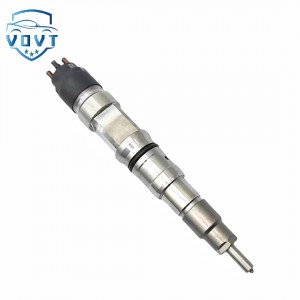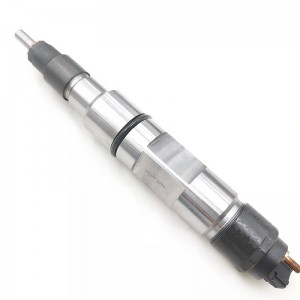Made in China Common Rail Fuel Injector 0 445 120 067 0445120067 for Bosch Diesel Fuel Injector Spare Part
Products Description
| Reference. Codes | 0 445 120 067 |
| Application | / |
| MOQ | 4PCS |
| Certification | ISO9001 |
| Place of Origin | China |
| Packaging | Neutral packing |
| Quality Control | 100% tested before shipment |
| Lead time | 7~10 working days |
| Payment | T/T, L/C, Paypal, Western Union, MoneyGram or as your requirement |
Hole-type fuel injector
Hole-type fuel injectors are mainly used in diesel engines with direct injection combustion chambers. They are divided into long and short types according to the form of the fuel injection nozzle. The number of nozzles is 1 to 8, and the nozzle diameter is about 0.15 to 0.7 mm. Figure 1 shows a long return-hole fuel injector used in a diesel engine, which consists of a needle valve, a needle valve body, a push rod, a pressure regulating spring, a pressure regulating screw and a fuel injector body. The nozzle diameter is 0.35 mm, the spray cone angle is 150, and the injection pressure is 17.5 MPa.
The fuel injection nozzle (including the needle valve and the needle valve body), also known as the needle valve pair, is made of high-quality alloy steel (GCr15) and is heat-treated and optionally ground into pairs, so it cannot be interchanged. The matching clearance is 0.001 to 0.0015 mm. It is necessary to ensure good sliding and no oil leakage. The needle valve has two conical surfaces. The lower conical surface cooperates with the corresponding inner conical surface in the valve body, which is called the sealing conical surface to seal the inner cavity of the injector; the middle conical surface is in the annular oil cavity of the valve body to withstand the axial thrust of the oil pressure to make the needle valve rise, which is called the pressure-bearing conical surface. The upper end of the needle valve body has an annular oil groove and an oil channel hole, and the lower end has an oil cavity and a spray hole. The needle valve pair is fastened to the injector body with a tight cap. The pressure regulating spring presses the needle valve against the valve seat through the push rod. The contact surface between the needle valve and the push rod is a spherical surface, which can prevent the needle valve from generating lateral pressure due to the bending of the push rod. The elastic force of the pressure regulating spring can be adjusted by the pressure regulating screw, and it is locked with the pressure regulating nut after adjustment. The working principle of the closed injector is shown in Figure 4-46. The high-pressure diesel from the injection pump enters the oil cavity through the oil channel in the injector body and the needle valve body. Since the spray hole is closed by the needle valve, the diesel pressure in the cavity rises rapidly. When the diesel pressure acting on the pressure-bearing cone surface of the needle valve is greater than the elastic force of the pressure regulating spring, the needle valve rises axially, the spray hole is opened, and the high-pressure diesel begins to spray into the combustion chamber through the spray hole. Due to the throttling effect of the spray hole, the sprayed diesel forms fine mist particles and quickly forms a combustible mixture with the air. This injection process continues until the injection pump stops supplying oil, and when the oil pressure in the injector cavity is lower than the elastic force of the pressure regulating spring, the needle valve immediately closes the spray hole under the action of the pressure regulating spring, and the injection stops.
The injection pressure of the closed injector mainly depends on the preload of the pressure regulating spring. Therefore, adjusting the preload of the pressure regulating spring can directly change the size of the injection pressure. When the adjusting screw is turned inward, the spring preload increases and the injection pressure increases; conversely, the injection pressure decreases. The needle valve lift is limited by the lower end surface of the injector body and the preload of the pressure regulating spring. Therefore, the maximum lift of the needle valve of the injector is 0.45mm to ensure rapid oil cut-off. During the operation of the injector, a small amount of diesel leaks out from between the needle valve and the valve body, flows back to the diesel filter or the fuel tank through the return oil pipe, and at the same time lubricates the needle valve parts.























